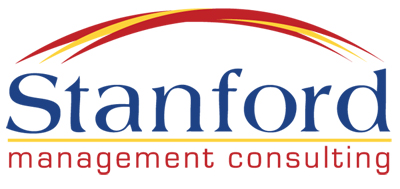 “Julia, I am working as hard as I can to make changes in my business. Why do I feel like I take two steps forward only to take one step back?”
“Julia, I am working as hard as I can to make changes in my business. Why do I feel like I take two steps forward only to take one step back?”
The number one challenge for our clients is managing change! This is not an area most folks enjoy thinking about. What we find at Stanford is not that the business owners we work with don’t want or need change; rather, they don’t understand how to plan for and implement change. Sometimes, you have to take one step back in order to take two steps forward!
There are hundreds of books written on change management. I personally love to teach business owner’s how to tackle making changes in their business so I could write on this topic for a year! I will split this topic into two post in order to cover what I feel is most beneficial for business owners to consider when making changes in their business.
What is Change?
Change is the only constant that we can rely on in the business world. It is critical for business owners to:
- Understand change
- Promote change
- Cope with change
- Value change
Although it seems an obvious question to begin with – the differences in how people perceive change is quite amazing. We find that the easiest way to understand what change represents is to know where you are and where you want to be – all you have to do now is get there.
Seems pretty straightforward doesn’t it!
Well that is the theory but the practice can be a lot harder especially when you understand that it’s not only you that needs to know this but everyone who may be impacted by the change.
What Drives Change
The need for change can come from multiple sources both internal and external:
- Customers
- Internal processes
- Employees
- Economic conditions
- Competitors
- Suppliers
- Technology
- Culture
Business owners have to understand the many sources that drive the need for change and their impact, both actual and potential, on the activities that allow the business to operate and produce revenue. The ability to cope with the changes is critical to long term survival.
Types of Change
There are several types of change, each with its own set of characteristics and impact on the business. Which type of change do you think is more easily controlled and preferable to a small business?
Incremental Change
The characteristics of incremental change include:
- Mostly happening
- Evolutionary
- Can be planned
- Can be invisible
- Can be deceptive
- May be culturally driven
Transformational Change
The characteristics of transformational change are:
- Rarely planned
- Difficult to control
- Can be overpowering
- Can be unavoidable
Planned Change
For planned change the characteristics include:
- Focus is on structure, systems, and processes
- Focus is on implementation & planning
- Emphasis is on the people involved because organizations don’t change – people change!
Of course, planned change is more easily controlled and preferable to a small business. Again, understanding where you are and where you want to be are the first steps in how to get there. Planned change is most often achieved because you are focussed on outcomes. The most successful outcomes are leader, process, or improvement driven changes.
Preparing For Change
The most important pre-requisite for change is a clear shared vision. This vision, along with the capacity for change and defined steps to achieving goals, will reduce frustration for all affected by the change.
The ability to see and understand how the business will benefit is vital. Change is most effective when people involved clearly understand:
- Why the change is necessary
- What the change will mean to their activity
- Where or how the change will bring improvements
People need to believe in the change to give it their full support and commitment so a clear vision of what the change is about is vital. The vision will be dependent upon the following organizational factors
- Purpose
- Culture
- Values
- Mission
The vision is central and is dependent upon
- Conveying an imaginable picture of the future
- Appealing to the long term interests of the people
- Consisting of realistic and attainable goals
- Being clear enough to guide decision-making
- Being flexible enough to allow individual initiative as well as adjustments for changing situations
- Being easy to explain and understand.
Without a clear vision there is a high chance of the change failing and this may have a significant negative impact on the survival of the business or goals. It is important to look at and understand the reasons why change fails.
Without taking heed of the negatives and planning for the positives to be implemented, change will be seen as a resource draining activity that is unwelcome in the organization. The ability to plan, implement and manage change successfully provides a business with a significant competitive advantage in today’s business environment.
We will look at Resistance to Change & Why Change Doesn’t Work next time.
